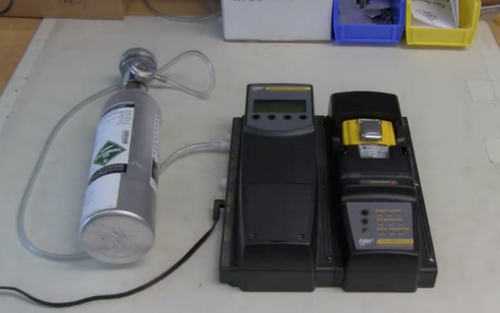What’s the shelf life of common calibration gases?
Calibration gas can expire just like food, and just like expired food, expired gas can cause major problems. The cylinders of gas that are used for bump testing and calibration are a crucial part of ensuring that gas monitors perform as they should to keep workers safe. Test gases come in disposable cylinders in set amounts and concentrations that get used to calibrate gas detection equipment. If this concentration is lower, your gas monitors won’t pick up toxic atmospheres as effectively, putting workers in danger.
It’s important to replace your calibration gas once it expires. There are some variables when it comes to when particular gases expire, so read on to get an idea of the shelf life of the calibration gases you might be using.
Reactive and Non-Reactive Gases
Different gases have different shelf lives, and a lot of the difference depends on whether the gas in question is reactive or non-reactive.
Reactive gases are gases that are unstable and can react to other materials and chemicals, moisture, and oxygen in some situations. Mixtures including hydrogen sulfide, chlorine, sulfur dioxide, ammonia, and hydrogen chloride are considered reactive. They have to be passivated (treated) to reduce their reactivity and usually have a shelf life between 8 and 12 months, at which point the gas concentration decreases and disappears.
Non-reactive gases are considered stable under most conditions and don’t react to the presence of elements that can cause reactive gases to degrade. Alkene or alkene hydrocarbons, nitrogen, hydrogen, carbon monoxide, and carbon dioxide are all examples of non-reactive gases. These gases don’t need to be passivated and can have a shelf life of up to three years.
Storage
Reactive gas mixtures are usually stored in aluminum cylinders and non-reactive gases in steel ones. Whatever material the cylinder is made of, a quality bottle manufacturer will make them with the smoothest internal walls possible down to the microscopic level. Rough internal walls have the potential to hide and hold a lot of potential contaminants; smoother bottle interiors have less surface area, fewer reactions, and therefore, a longer shelf life. Gas cylinders should be stored in a climate-controlled environment. Storing your cylinders in a vehicle will likely reduce the shelf life due to the repeated hot and cold cycles.
Manufacturer’s Specifications
No matter how you store your high-quality container, and even if it’s a non-reactive gas, it will expire at some point. All calibration gases come with manufacturer warranties, which include “best if used by” dates. Always follow manufacturer guidelines for gas expiration and replacement, follow their recommendations for accurate readings, and don’t use gas mixtures once the date passes.
PK Safety Gas Detection Accessories
PK Safety has been your workplace safety partner for 70 years. That’s decades of experience vetting PPE and worksite safety equipment for jobs that most of us have hands-on experience with. In addition to selling all of the gas detection accessories you need from the brands you trust, we have gas monitor professionals on-site. We have factory-trained certified technicians in-house to help with repair and gas detector calibration services for BW, RKI, and RAE gas monitors. If you have any questions about our products, services, or expertise, you can contact a PK Safety expert online or by calling 800.829.9580.
Recent Posts
-
Customizing Gas Detectors: Tailoring Solutions to Fit Your Unique Requirements
In today’s diverse industrial landscape, a one-size-fits-all approach to safety simply doesn’t cu …Jul 3rd 2024 -
10 Ways to Prevent Wildfires
You can prevent wildfires by extinguishing flames before you leave the worksite. Avoid practicing …Jul 1st 2024 -
ANSI/ISEA 138 Safety Gloves: Ensuring Hand Protection
The human hand is an anatomical masterpiece and arguably the greatest tool attached to our bodies …Jun 25th 2024





